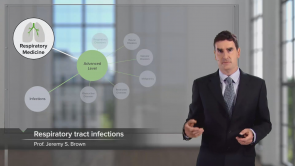Externalities

Über den Vortrag
Der Vortrag „Externalities“ von James DeNicco ist Bestandteil des Kurses „Principles of Microeconomics (EN)“. Der Vortrag ist dabei in folgende Kapitel unterteilt:
- A Closer Look at Externalities
- Public Policy towards Externalities
- Private Solutions and the Coase Theorem
- Recap
Quiz zum Vortrag
If the impact of an externality is harmful for the third party, it is called a ________ externality and the market equilibrium quantity produced is ________ the socially optimal level.
- negative ; more than
- negative ; less than
- positive ; more than
- positive ; less than
When the government levies a ________ on a good equal to the external cost associated with the good’s production, it ________ the price paid by consumers and makes the market outcome ________ efficient.
- tax ; increases ; more
- subsidy ; increases ; more
- tax ; increases ; less
- subsidy ; increases ; less
Which of the following statements is true according to the Coase Therom?
- If private parties can bargain without cost over the allocation of resources, they can solve the problem of externalities on their own.
- If private parties cannot bargain without cost over the allocation of resources, they can solve the problem of externalities on their own.
- The government is never necessary to solve the problems of externalities.
- The government is always necessary to solve the problems of externalities.
Kundenrezensionen
5,0 von 5 Sternen
| 5 Sterne |
|
5 |
| 4 Sterne |
|
0 |
| 3 Sterne |
|
0 |
| 2 Sterne |
|
0 |
| 1 Stern |
|
0 |




